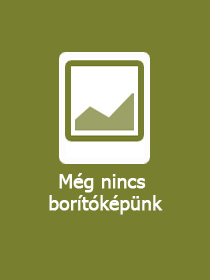
| ISBN13: | 9781032545585 |
| ISBN10: | 1032545585 |
| Kötéstípus: | Keménykötés |
| Terjedelem: | 236 oldal |
| Méret: | 234x156 mm |
| Nyelv: | angol |
| Illusztrációk: | 17 Illustrations, black & white; 17 Line drawings, black & white; 13 Tables, black & white |
| 700 |
Szociológia általában, módszertan, kézikönyvek
Szociális kérdések, szociális munka
A mérnöki tudományok általános kérdései
Gépészmérnöki tudományok
Építőmérnöki tudományok, építőipar
Környezet-egészségügy, foglalkozás-egészségügy
Ipari érdekvédelmi és biztonsági kérdések
A sport, testnevelés általában
Terméktervezés
További könyvek az orvostudomány területén
További könyvek a számítástechnika területén
Média és kommunikációtudomány általában
Learning from Near Misses
GBP 81.99
Kattintson ide a feliratkozáshoz
Learning From Near Misses can provide opportunities to improve safety without the need for harm to have first occurred. This book explores how near misses contribute to safety management across high-risk sectors, to help organisations, industries and sectors utilise learning from near misses in line with contemporary safety theory.
Learning from Near Misses can provide opportunities to improve safety without the need for harm to have first occurred. Near misses are ?free lessons? which are high volume and rich in value. However, some sectors are yet to embrace learning from near misses to improve the effectiveness and safety of their operations. This book explores how near misses contribute to safety management across a range of high-risk sectors and shares lessons to help organisations, industries and sectors utilise learning from near misses in line with contemporary safety theory.
This title discusses how the management of near misses has developed in the past 30 years since early clarification of the concept. It defines the ?near miss? and describes its unique features in relation to controls while debating relevant safety science and how different perspectives (e.g., Safety I and Safety II) can help extract valuable learning from near misses to improve safety. Case studies reveal how near misses are managed and learnt from across a range of sectors. The reader will learn to acknowledge and appreciate the complexities of near misses in modern systems and recognise the considerations that are required to extract learning from them.
An ideal and essential read for safety practitioners, consultants and academics, this book is also suitable for those working in safety management in high-risk and highly regulated sectors.
Table of Contents
Preface
Foreword
List of Contributors
Acknowledgements
Disclaimer
Part I ? Introduction and Background
Chapter 1: Near Misses: What and Why? (Woodier)
Chapter 2: Near Misses and the Evolution of Safety Science (Thoroman)
Part II ? Cross-Sector Reflections and Case Studies
Chapter 3: Aviation Near Misses and Safety Management: Operational and Academic Perspectives (Davis & Woodier)
Chapter 4: Children, Parents and the Near Miss: An Opportunity to Learn in the Agricultural Sector (Cosby, Menchon, Sinai & Manning)
Chapter 5: Process Safety: Using Human Factors Safety Critical Task Analysis to Learn from Near Misses (Furniss & Embrey)
Chapter 6: Viewing a Near Miss as a Quality Upgrade Opportunity in the Construction Industry (Whiteoak, Appleby & Sullivan)
Chapter 7: Learning from What Goes Right in Healthcare: Reframing Approaches to Safety Investigation (Higham & Lounsbury)
Chapter 8: Enhancing Safety in Mining: Understanding and Utilizing Near-Miss Reports (Haas, Demich & McGuire)
Chapter 9: Nuclear Professionals and Near Misses: The UK Civil Nuclear Perspective (Burrage & Barton)
Chapter 10: Near Misses in the Rail Industry: Why Does Reporting Matter? (Chamberlain-Clark)
Part III ? Supporting Conditions and Final Reflections
Chapter 11: Overcoming the Near-Miss Bias in High-Risk Industries (Tinsley & Dillon)
Chapter 12: Safety Culture: Reflections and Alignment with Near Misses (Woodier & Chamberlain-Clark)
Chapter 13: Designing a Near-Miss Management System: An Example from Occupational Safety (Gnoni & Tornese)
Chapter 14: Conclusions and Final Reflections to Support Learning from Near Misses (Woodier)
Index

